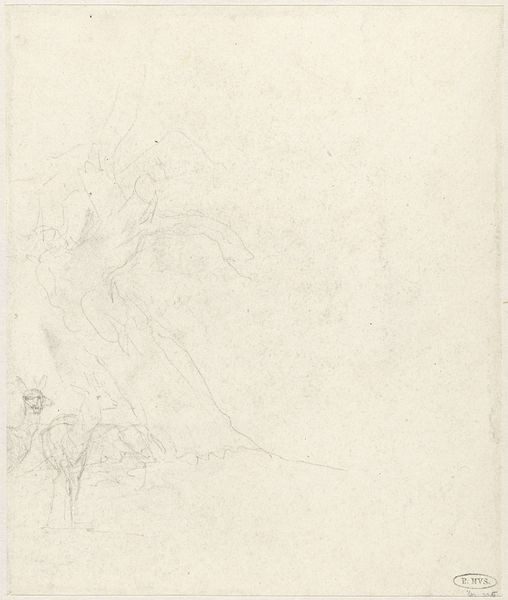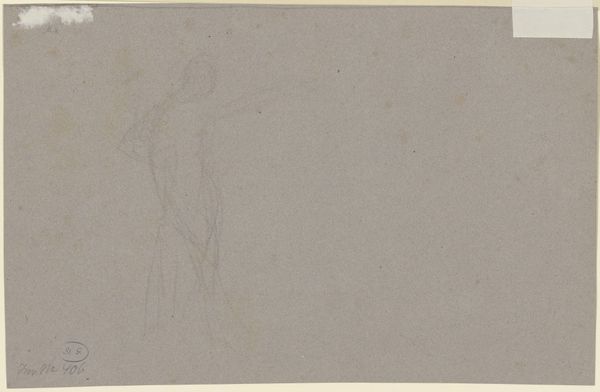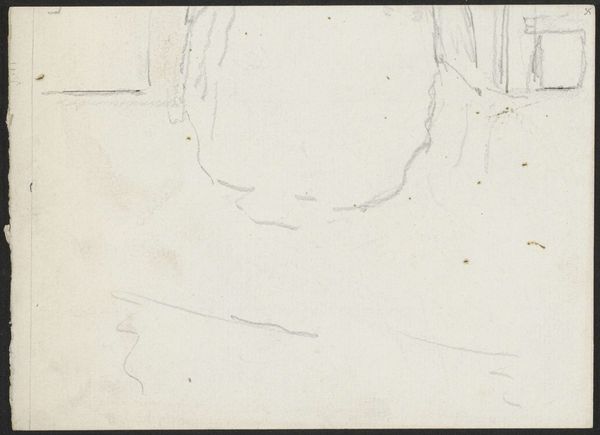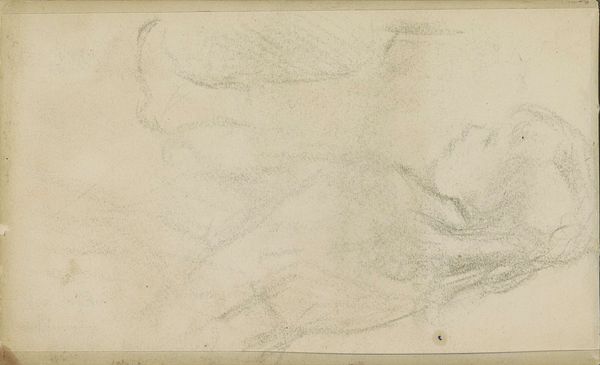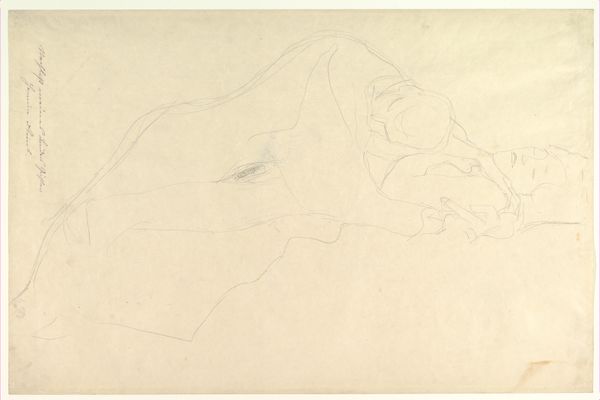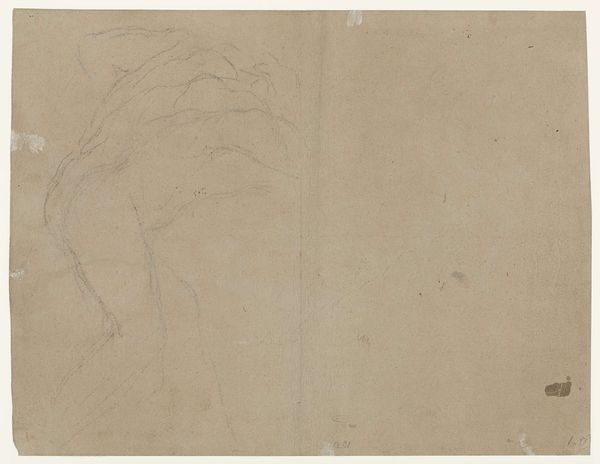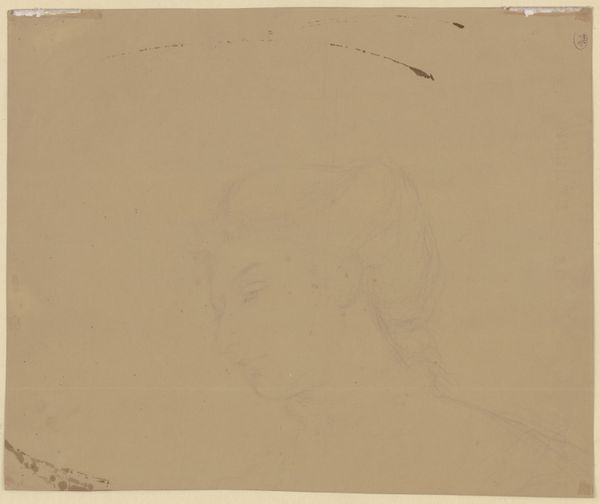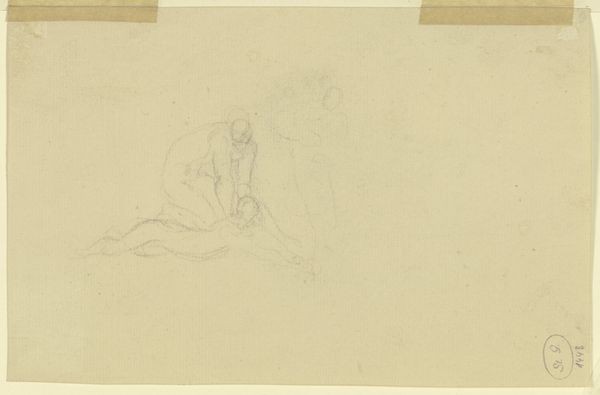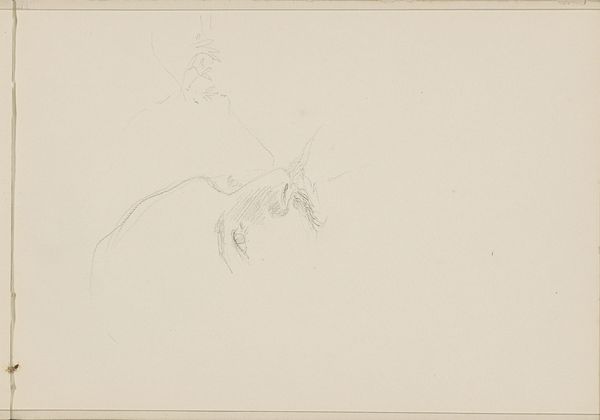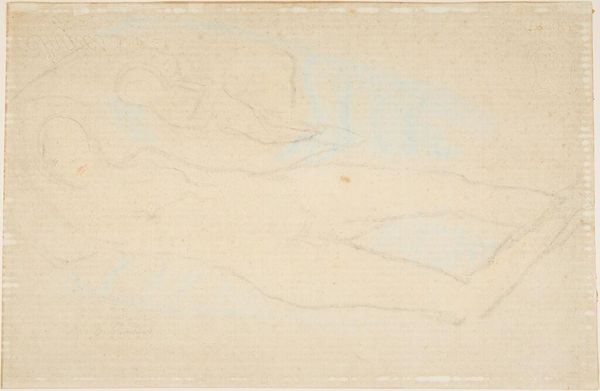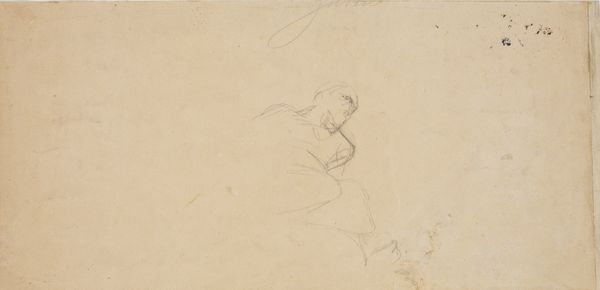
drawing, paper, dry-media, pencil
#
portrait
#
pencil drawn
#
drawing
#
16_19th-century
#
pencil sketch
#
figuration
#
paper
#
dry-media
#
romanticism
#
pencil
#
sketchbook drawing
#
pencil work
Copyright: Public Domain
Curator: What strikes me first is the vulnerability in this pencil sketch—so ephemeral. Editor: Ephemeral is the word. It feels almost unfinished, as if the image is slowly materializing from the paper itself. It's wispy, faint and barely there. Curator: That's precisely what is so compelling about this study of garments attributed to Peter Cornelius, circa 1810, presently housed at the Städel Museum. It reveals the artist's process, the careful observation and building up of form. What associations do garments trigger in you? Editor: The garment depicted suggests a figure absent but present; its folds implying the shape and presence of the person it adorns. I can't help but wonder about the social role it represents, even if it's just a study. Does the way fabric drapes convey anything about class, gender or the role of women in Cornelius's time? What statements did these types of clothing make during this time? Curator: Fascinating points. Clothing, you know, is a powerful signifier—a symbol of status, identity, even resistance. And even in its incomplete rendering, the draped fabric does carry a certain weight and historical memory. Note how Cornelius is able to extract the inherent classical properties of Romanticism even at this small, observational scale. Editor: Indeed, and this is also important when looking at garment studies like this in an art context. I suppose the sketch shows us what the finished painting tries to do. Did the final painting include the figure suggested by these garments? Is the figure also presented passively, defined by the clothes she is wearing, even trapped inside it? Curator: That's where art truly resides—in the questions it inspires and the ongoing dialogue it provokes across time. Cornelius would certainly have recognized those symbols himself. Editor: Agreed. Looking closely, these are the conversations—across artistic media and eras—that give depth to seemingly simple studies such as this one. I now consider this sketch as not simply a drawing, but a social object of reflection.
Comments
No comments
Be the first to comment and join the conversation on the ultimate creative platform.
